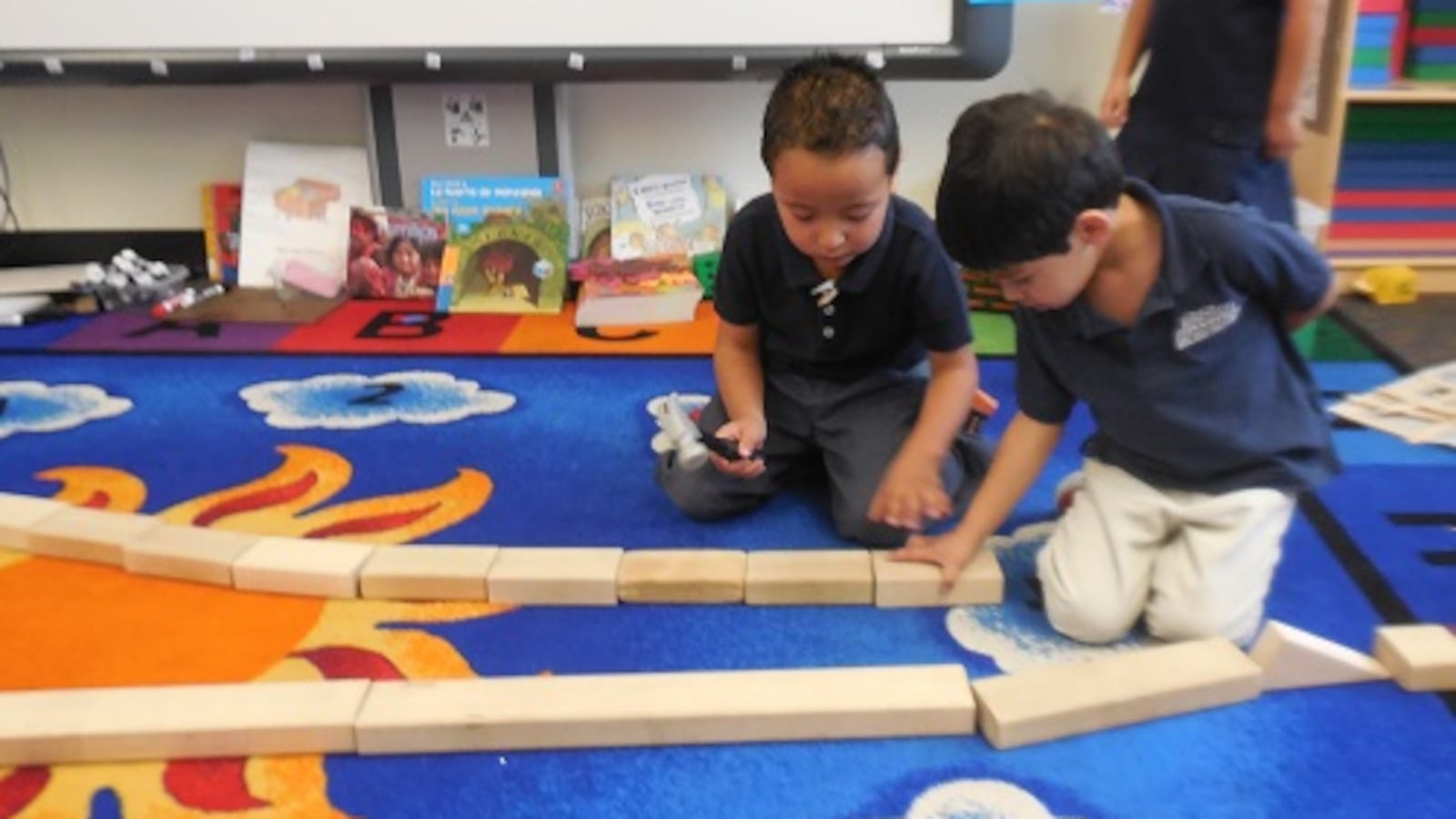There are certain things you won’t see in Anna Hileman’s kindergarten classroom at Denver’s McGlone Elementary School. One of them is any kind of sticker or traffic light chart indicating who’s behaving and who’s not. Although ubiquitous in many elementary classrooms, such devices are absent here, and it’s not because her 26 students are perfect.
It’s because Hileman and her fellow preschool and kindergarten teachers use a curriculum called “Tools of the Mind,” which focuses on developing skills like self-control and attentiveness along with reading and math. The idea is that working early and intentionally on traits that fall under the umbrella of “self-regulation” makes learning more efficient and builds valuable lifelong skills.
The curriculum, which was developed in the early 1990s by two researchers at what is now Metropolitan State University of Denver, has received laudatory mentions in books such as “How Children Succeed” by Paul Tough and “The Marshmallow Test” by Walter Mischel.
Still, its footprint has remained modest— this year touching around 50,000 young students in 18 states. Even in Colorado, where it was first piloted in Denver’s University Park Elementary 16 years ago, the program is used in only four districts.
“For the first 10 years … I knew the name of every single teacher in our program,” said Deborah Leong, co-creator of the curriculum and now executive director of the Tools of the Mind non-profit.
In fact, the program, which relies on word-of-mouth publicity, gets many more requests than it has been able to accommodate. But recent changes in the program’s training model, including the launch of an iPad app last month, could boost participation dramatically. In fact, Leong hopes the curriculum will reach one million children nationwide by 2017.
New research on the program may bolster those expansion plans. A study published today in the online journal PLOS ONE, found that Tools had positive effects on kindergarteners’ academic and self-regulation skills. And with bigger impacts found in high-poverty schools, the authors believe the approach holds promise for closing the achievement gap.
The new results are especially welcome to Leong and her team because in recent years several studies on Tools showed lackluster results. Those studies seemed to contradict earlier research that offered up glowing results and launched the curriculum into the spotlight.
Leong noted that some earlier studies compared Tools to the instructional equivalent of “business as usual” –mediocre curricula or none at all. The later studies, which were done as the program was scaling up, compared Tools to other high-quality early childhood curricula, she said.
Carrie Germeroth, assistant director for research at the University of Denver’s Marsico Institute for Early Learning and Literacy, said the complex nature of the curriculum and the need for intense training can make implementation tricky.
“If you’re in big school districts where there’s other initiatives going on….If the principal or building leader is not behind it, if the administrative support isn’t there, it’s not going to go well,” said Germeroth, who recently served as project director for a study examining a modified Tools curriculum.
Disappointing though some recent Tools studies have been, they led to a series of tweaks to the curriculum and the accompanying training regimen.
“What we learned from all those studies is you have to grow with fidelity,” said Leong. “We used everything we learned ….to fix what we were doing…. and it’s working much better now.”
Play with a purpose
The emphasis in a Tools classrooms is on play, dramatization and peer-to-peer interaction. It’s easy to see at McGlone, which is one of six Denver schools that uses Tools and one of two Tools lab schools in the metro area.
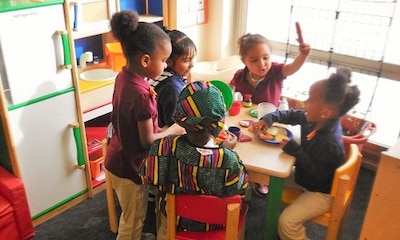
On a recent Wednesday morning, Hileman and one of her students acted out the concept of bartering during a lesson on the Magic Tree House book “Mummies in the Morning.” She pretended to be a penniless scribe who offered the student books in exchange for a snake.
Next door, as fellow kindergarten teacher Jamie Livingston got ready to split the class into two groups, she asked half the class to turn into black cats—in keeping with the “Mummies in the Morning” theme—and head toward the aide who would be working with them. Meowing, they crept playfully on their hands and knees toward the appointed spot.
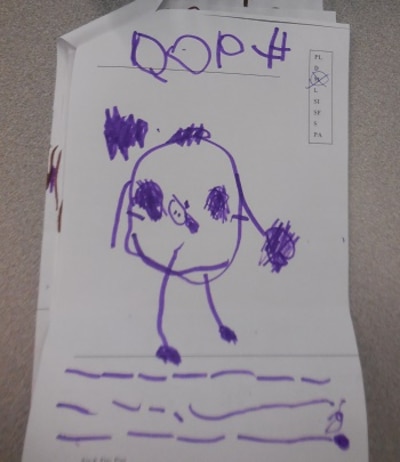
Down the hall in a preschool classrooms, students were completing “play plans,” in which they drew pictures of the center they would go to. Using the curriculum’s scaffolded writing approach, they attempted to write in a description of their planned activity.
Once the plans were complete, the children scattered across the room, planning a party in the kitchen, working on their cars in the garage, and building a road in the block area. While there would be free play later, students were expected to adhere to their plans and stay at the center with the group of peers they had started with.
For Tools developers and the educators who implement it, the curriculum’s play component is unique. At Irish Elementary School, the only school in the Poudre district to use Tools, Principal Lindsey Walton said it’s also popular with parents. Previous kindergarten curriculums seemed to ask the children to behave more like first- or second-graders.
Now, she said, what parents see “is kids playing, but in a really productive way, and it makes them feel good…We get a lot of parents who choice into our school just for kindergarten.”
Reading, writing, self-control
Self-regulation helps kids fight distraction, persist through frustration, or resist the impulse to smack an annoying classmate. But it also has big implications for long-term academic and life success.
“What we’ve found through the neuroscientist evaluations of self-regulation is it’s kind of the new IQ,” said Juanita Regehr, director of staff development/lab schools for Tools.
That’s why Tools classrooms embed skill-building around self-regulation into every lesson and activity. It’s common to hear stories about how Tools teachers no longer hustle around the classroom “putting out fires” or how students gradually learn to solve peer conflicts without tattling to the teacher.
Kristin Steed, principal of Marsh Elementary in the tiny Monte Vista district, said teachers have really noticed a difference since Tools was adopted in 2012.
“It’s amazing how one child will turn and tell another child, ‘Hey that hurts their feelings. You shouldn’t talk to them like that.”
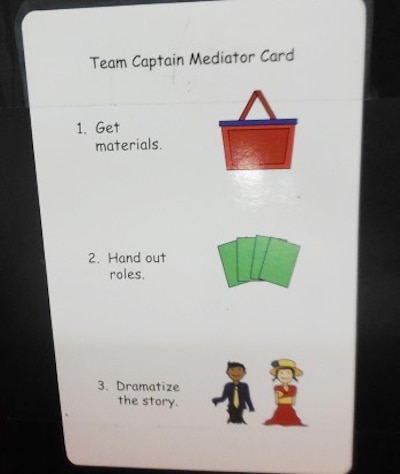
There’s also a sense that Tools helps establish clear boundaries and expectations for students. At Irish Elementary School, the only school in the Poudre district that uses Tools, Principal Lindsey Walton said kindergartners show a sense of responsibility and purpose.
“They know exactly where to go and what to do and what their job is…and the teacher is more a facilitator.”
Irish started using Tools in its kindergarten classrooms seven years ago. There were significant behavior problems among kindergarteners at the time and the former curriculum, “Open Court” didn’t address that issue, said Walton.
Since its adoption she’s seen a decrease in office referrals among kindergartener, though she can’t attribute it to Tools with scientific certainty. This year, the school started using Tools in its preschool classes to better align the preschool-kindergarten span.
While Tools of the Mind staff say the curriculum is effective for students of any income level, many high-poverty schools use it. At McGlone, nearly 93 percent of students qualify for free or reduced-price meals. At Irish that number is 82 percent and at Marsh, it’s about 70 percent.
“We often get asked in schools like this…that are harder schools,” said Regehr, during a recent walk-through at McGlone. “We don’t target, but they are often seeking more help and more support, so they target us.”
Complications
While many teachers sing the praises of Tools, there seem to be a few weak points. Anecdotally, math appears to be one of them, with complaints that it’s not as rigorous as it could be and doesn’t lend itself to differentiated instruction for advanced students.
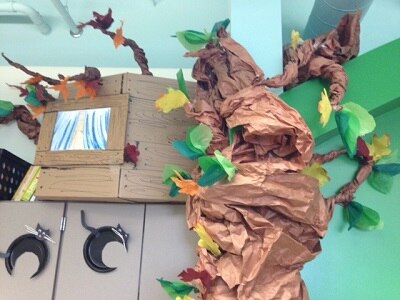
Given that Tools is a research-based curriculum, ensuring fidelity–careful adherence to specified methods–is another challenge. That’s part of the reason it comes with manuals two inches thick and teachers receive extensive training during the first two years of implementation. Still, for veteran teachers, embracing Tools whole hog can be tough.
“Every teacher comes with their own idea, of course, and experiences with what they think works,” said Regehr, adding that she often hears the questions, “Why isn’t this working?”
“We kind of come in and sit down with them and use the text as the expert.”
Teachers like Hileman, who is in her third year of teaching and her second year with Tools, say they like the explicit sequencing and structure, but it can feel overly prescriptive to some educators. Cheryl Caldwell, director of early childhood education for Denver Public Schools, said Tools doesn’t allow as much content flexibility as “Creative Curriculum,” which is used in the vast majority of the district’s early childhood classrooms.
Still, she said it’s good at teaching rituals, routines and self-regulation–work often squeezed out in other classrooms by the focus on academics and third-grade test scores.
In Jeffco, where Molholm Elementary also serves as a Tools lab school, the curriculum is used at all 38 preschool sites and about 10 kindergarten site. Administrators say its foundation in theory makes it a valuable resource.
“It really does teach our teachers about best instructional practice,” said Sherry Fast, the district’s preschool coordinator.
Plus, administrators say kindergarteners who came from Tools classrooms are easy to spot because of their literacy and self-regulation prowess. But the training demands can make the curriculum hard to sustain, especially in grades where there is high teacher turnover. That’s part of the reason that its use in kindergarten has gradually declined from 25 sites to 10. Another factor is some schools’ addition of subject-specific curricula, which dilute the Tools approach.
Despite such fluctuations, there’s a sense that the Tools philosophy—if not every last detail in the curriculum—fills a major gap in early childhood education sphere.
“I don’t see this going away,” said Steed, who sought out the curriculum after reading about it in the journal Science.
“It meets a need that actually hasn’t been met before and will always be needed.”

